Idea by
Benítez Toledo Isabel del Mar
http://issuu.com/isamar.benitez
Call for ideas 2020
Coastal landscape dynamics
Coastal landscape dynamics
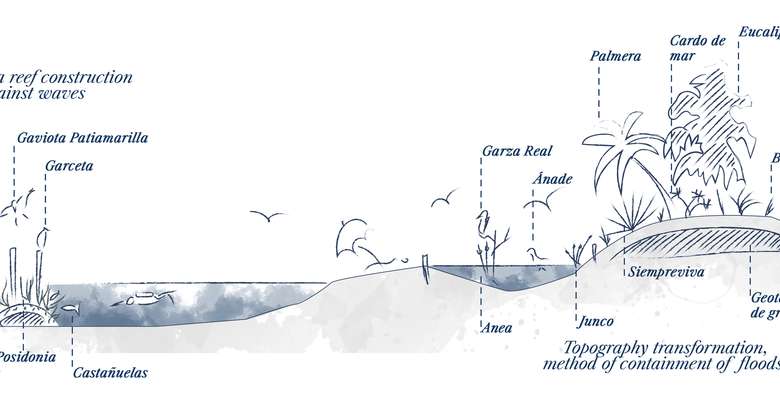
- Systemic changes
It is understood as necessary the action in the Motril coast for the regeneration of the beaches in a sustainable way, determining the solution established from the study of other cases, study of the most common alternatives and the study of the characteristics, adverse situations and identifying qualities of the place. Until now it has been seen that structural measures can solve the problem in specific areas, but they generate it again downstream of the structures. The intention of this research is to provide an alternative with the landscape addition, from which its heritage values can be enhanced, taking advantage of the action to mitigate erosion processes and coastal dynamics, and also, working with living materials that help mitigate the effects of change as the Oceanic Posidonia.
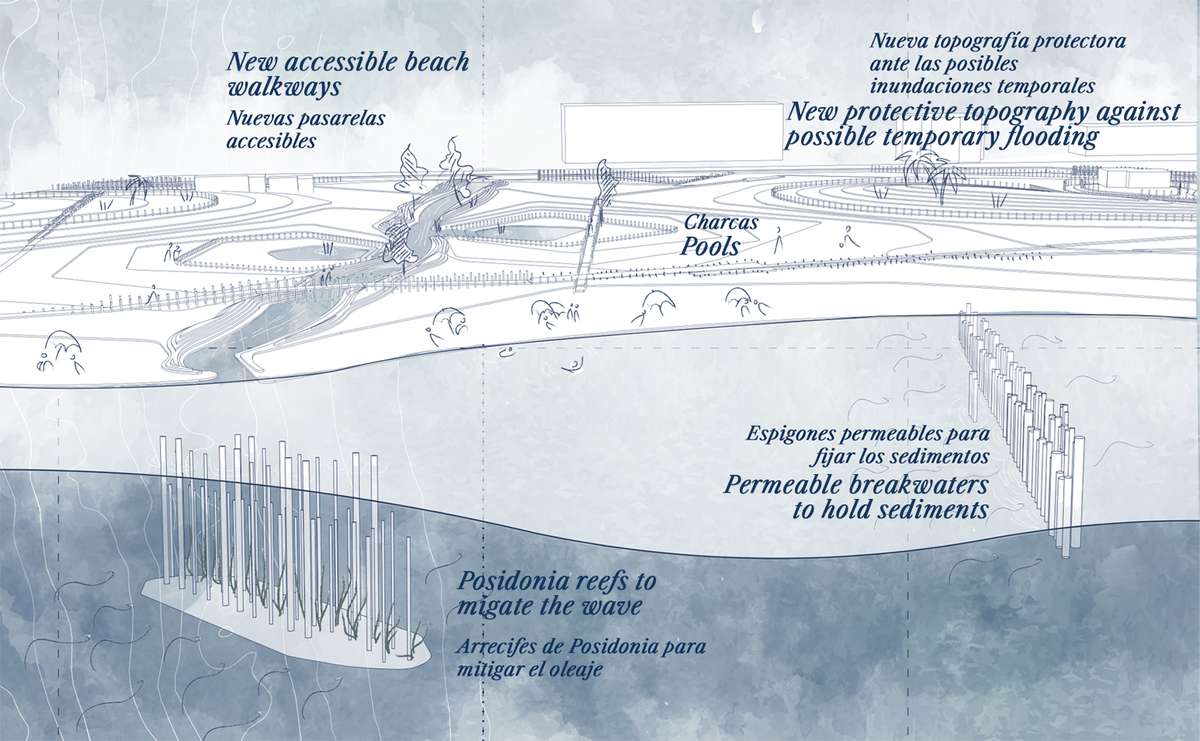
Stage 1. Three main techniques are proposed, the construction of artificial reefs of Posidonia, permeable breakwaters (so as not to lose the little sediment that the Guadalfeo brings) and the transformation of the topography of the beach as a method of containing possible floods. In the first phase, after carrying out the proposed strategies, the use of the beach would be similar to the current one, avoiding the drastic erosion processes of Playa Granada and being able to access even floods.
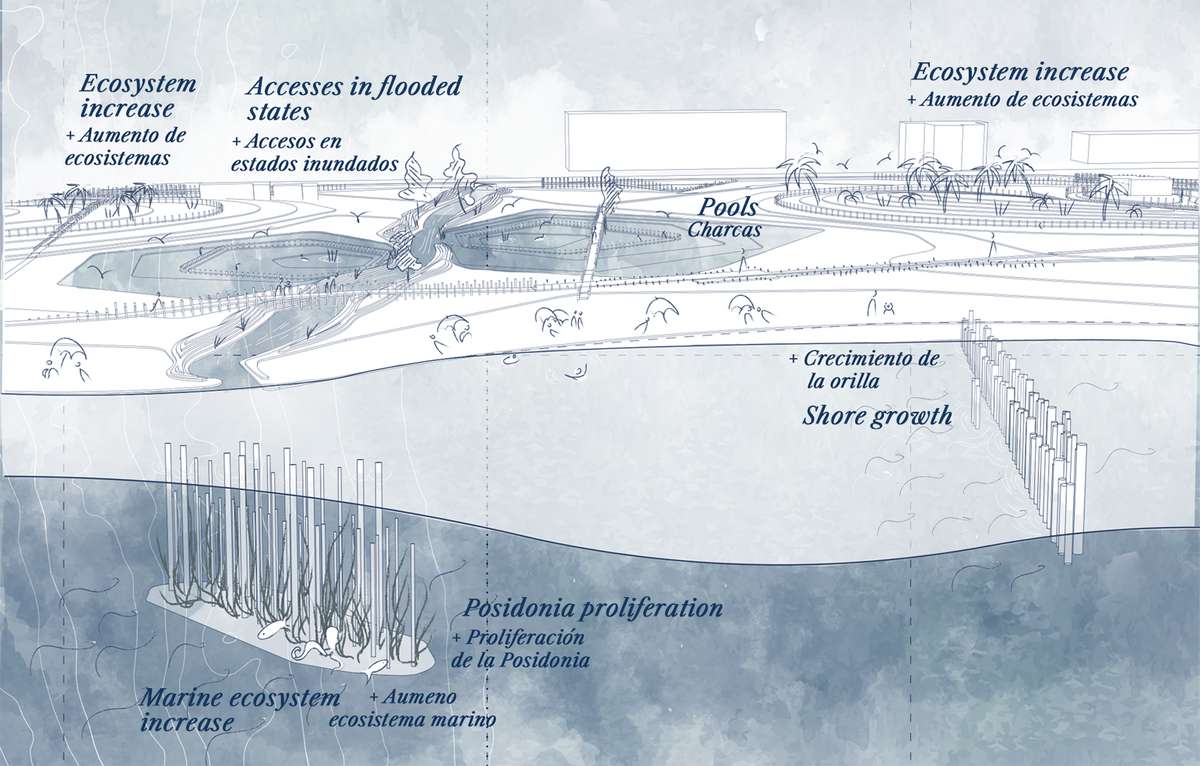
Stage 2. Once the project has been consolidated, when the Posidonia plantations stabilize and act as a barrier against the waves, the erosion of the beaches would be minimized. This together with the sediment fixation, thanks to the installation of permeable breakwaters, will help stabilize the coast, estimating a possible and slight growth of it. The stabilization of the coastal and marine landscape will attract new species, increasing the value of these beaches.
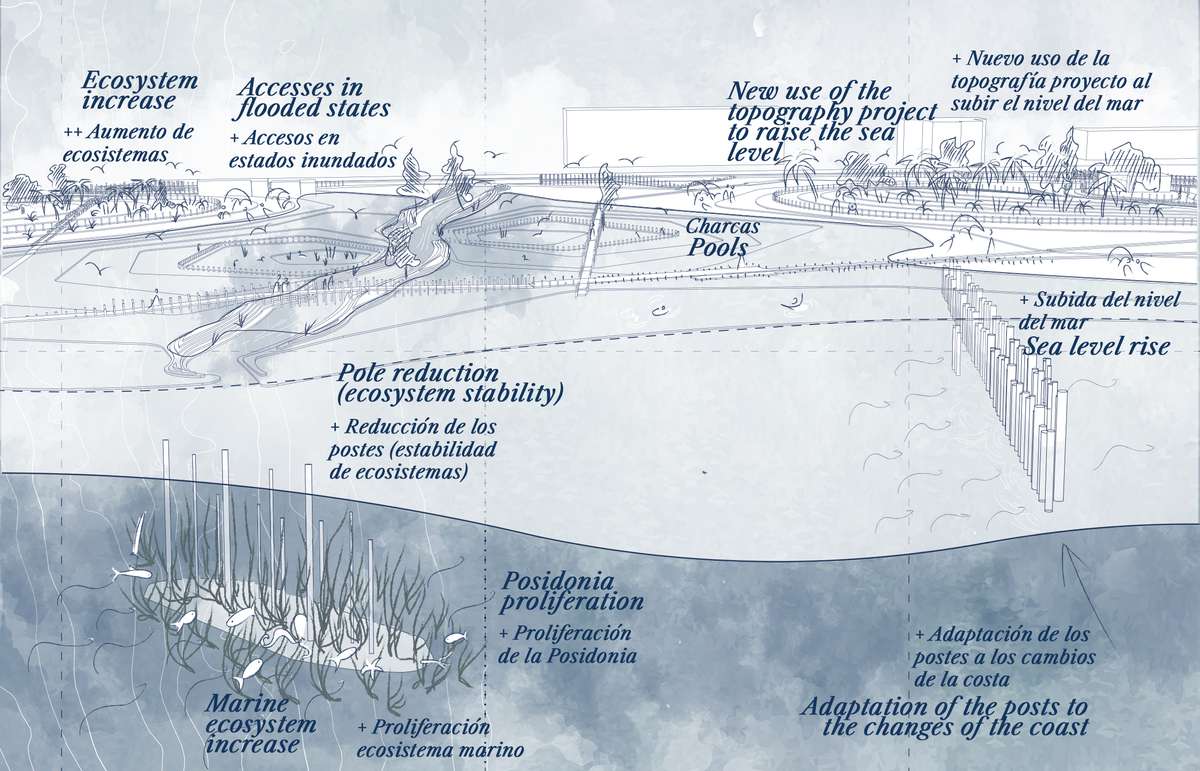
Stage 3. With climate change, landscape transformation as we know it today will be imminent. This is why this project foresees the use of the beach in different ways adapting the accesses and the new topography to future floods so that it can be as accessible as possible.
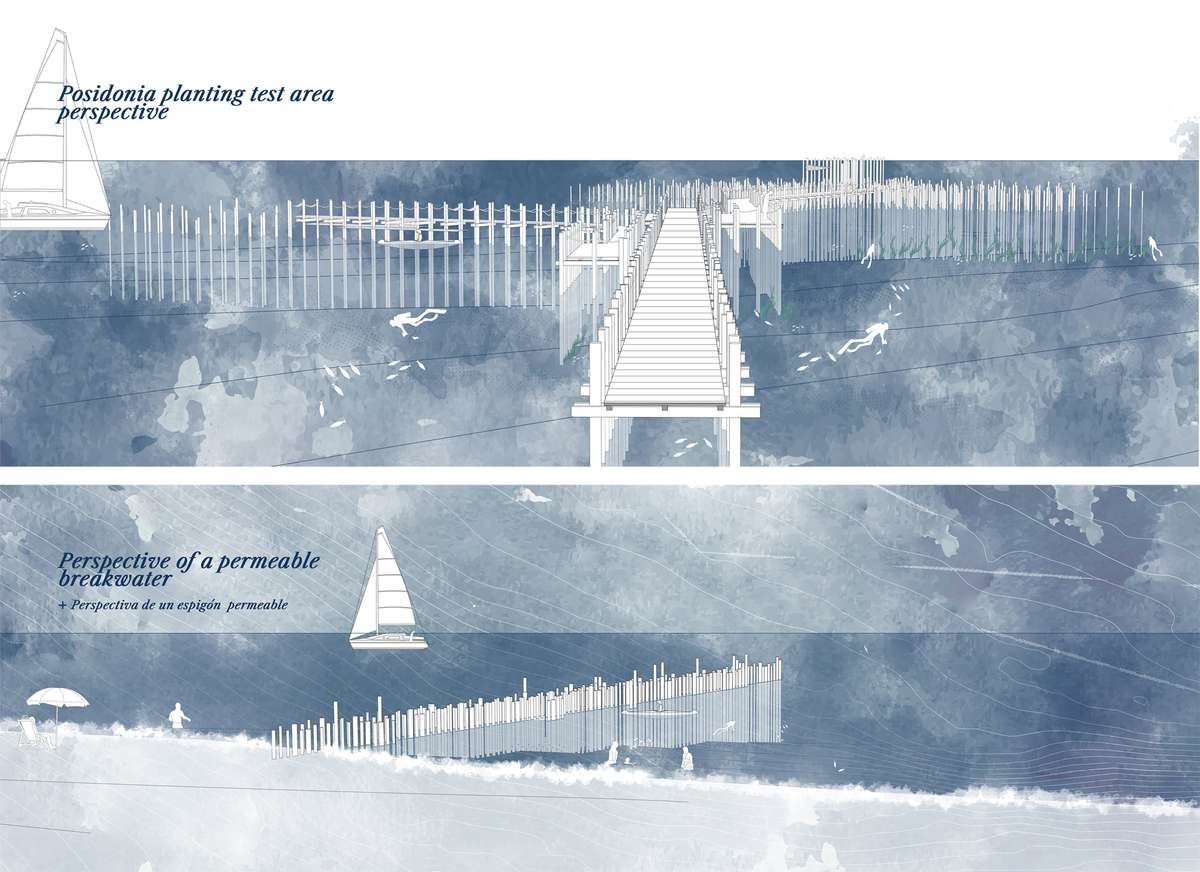
Breakwaters and planting test area. The main basis of this project is based on finding alternative solutions to the most common, with the principle of projecting and learning from nature. Therefore, the benefits of the implantation and conservation of Posidonia meadows as a resource for coastal protection in a pre-reef test area are studied. In wooden breakwaters, thanks to the permeability between piles, sediment circulation is maintained despite being modified, reducing the negative effects.
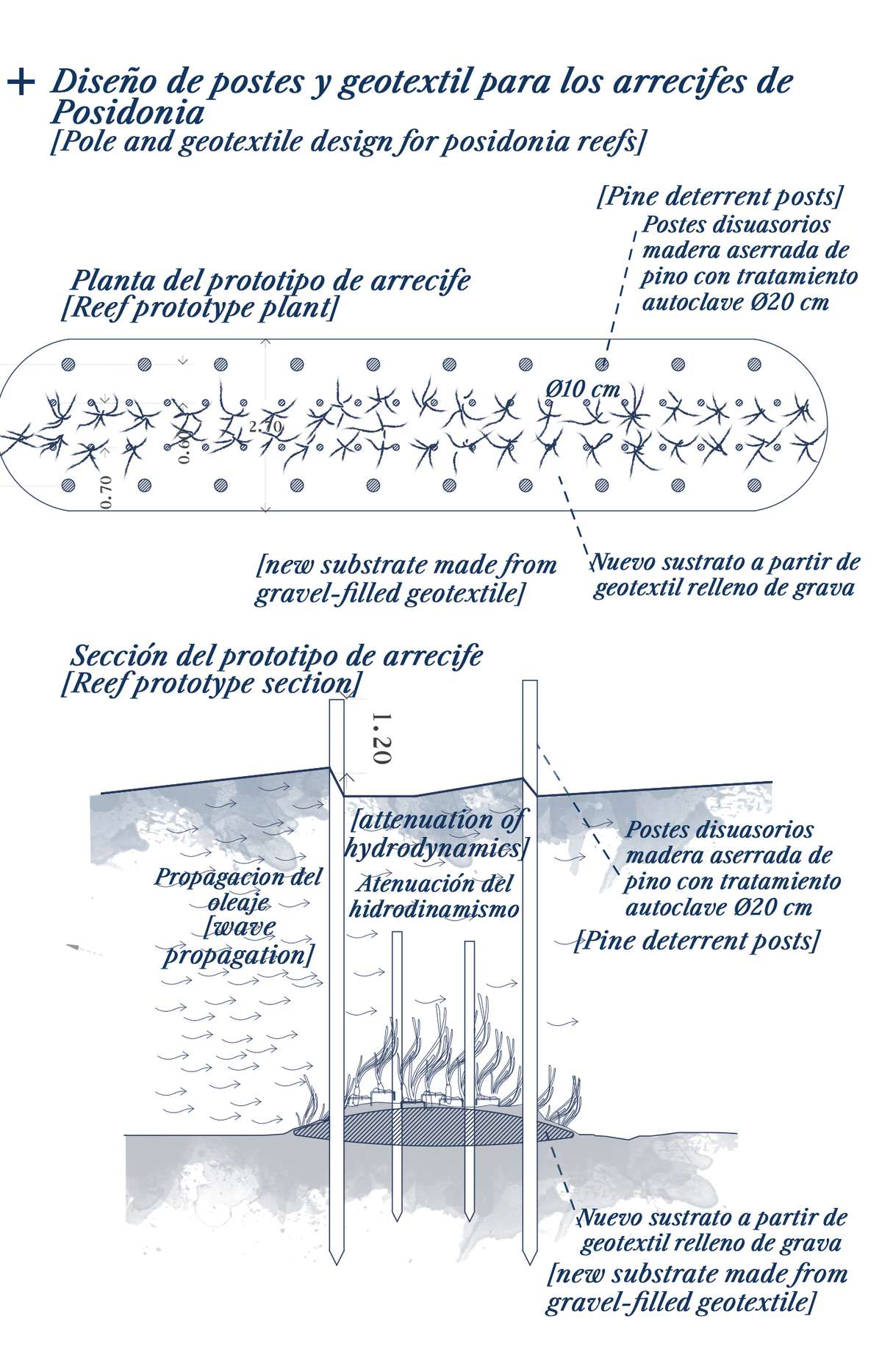
Posidonia reef. A Posidonia planting system is designed to improve the substrate necessary for plant proliferation and avoid the most common causes of deterioration.
To prevent the roots of the plant from being ripped off by the force of the waves and erosion, a new substrate in the form of a gravel-filled geotextile is installed. On this substrate is where the Posidonia fragments will be planted.
To this substrate will be added the installation of wooden piles to improve its fixation
Coastal landscape dynamics
Coastal landscape dynamics

- Systemic changes
It is understood as necessary the action in the Motril coast for the regeneration of the beaches in a sustainable way, determining the solution established from the study of other cases, study of the most common alternatives and the study of the characteristics, adverse situations and identifying qualities of the place. Until now it has been seen that structural measures can solve the problem in specific areas, but they generate it again downstream of the structures. The intention of this research is to provide an alternative with the landscape addition, from which its heritage values can be enhanced, taking advantage of the action to mitigate erosion processes and coastal dynamics, and also, working with living materials that help mitigate the effects of change as the Oceanic Posidonia.
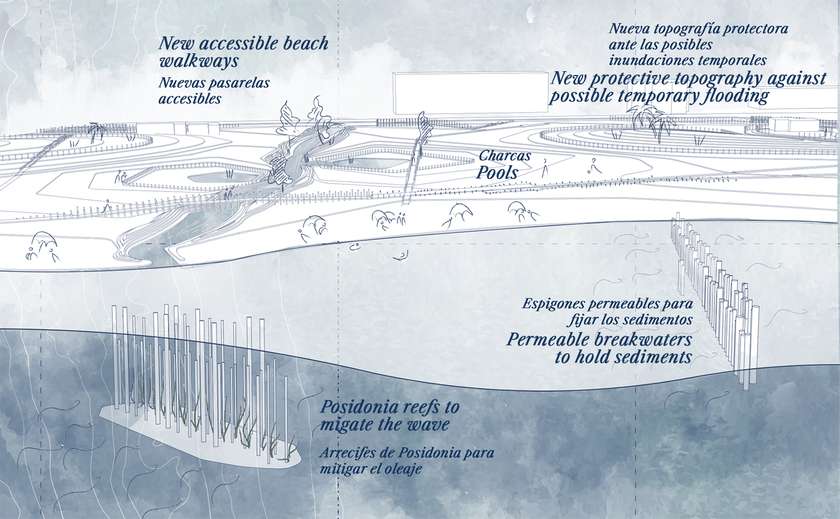
Stage 1. Three main techniques are proposed, the construction of artificial reefs of Posidonia, permeable breakwaters (so as not to lose the little sediment that the Guadalfeo brings) and the transformation of the topography of the beach as a method of containing possible floods. In the first phase, after carrying out the proposed strategies, the use of the beach would be similar to the current one, avoiding the drastic erosion processes of Playa Granada and being able to access even floods.
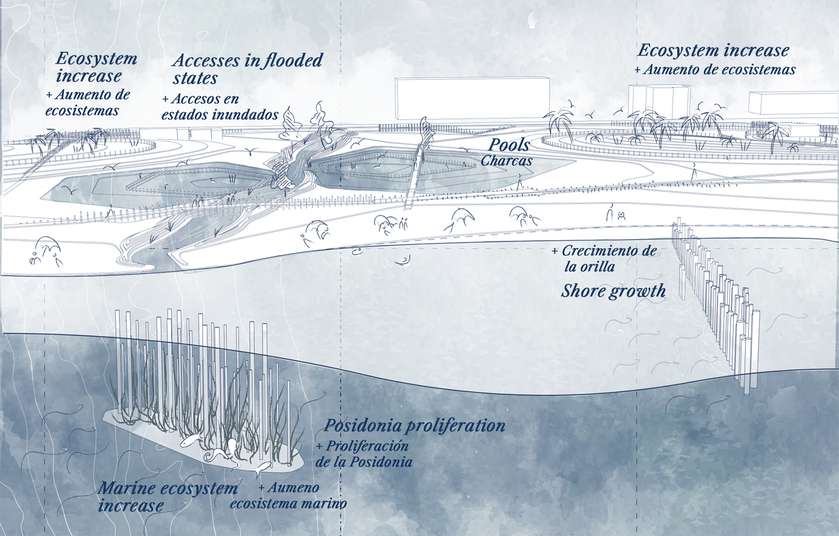
Stage 2. Once the project has been consolidated, when the Posidonia plantations stabilize and act as a barrier against the waves, the erosion of the beaches would be minimized. This together with the sediment fixation, thanks to the installation of permeable breakwaters, will help stabilize the coast, estimating a possible and slight growth of it. The stabilization of the coastal and marine landscape will attract new species, increasing the value of these beaches.
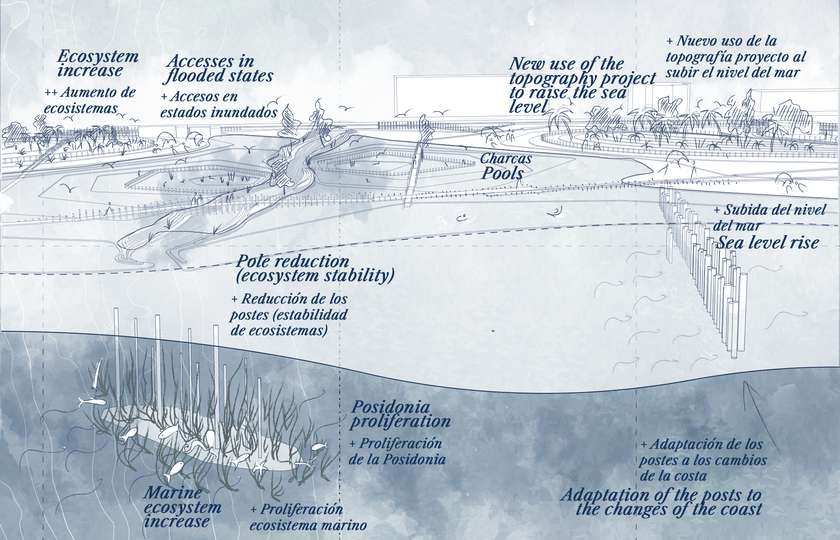
Stage 3. With climate change, landscape transformation as we know it today will be imminent. This is why this project foresees the use of the beach in different ways adapting the accesses and the new topography to future floods so that it can be as accessible as possible.
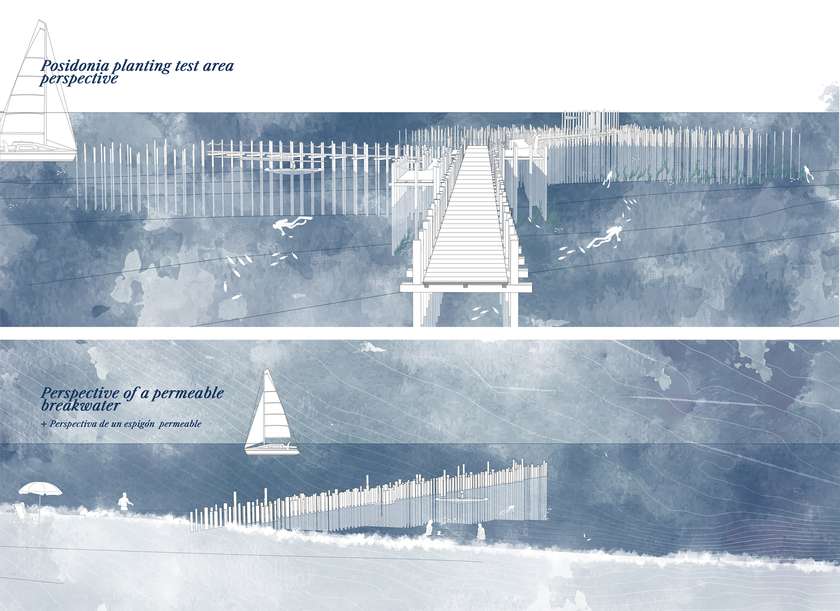
Breakwaters and planting test area. The main basis of this project is based on finding alternative solutions to the most common, with the principle of projecting and learning from nature. Therefore, the benefits of the implantation and conservation of Posidonia meadows as a resource for coastal protection in a pre-reef test area are studied. In wooden breakwaters, thanks to the permeability between piles, sediment circulation is maintained despite being modified, reducing the negative effects.
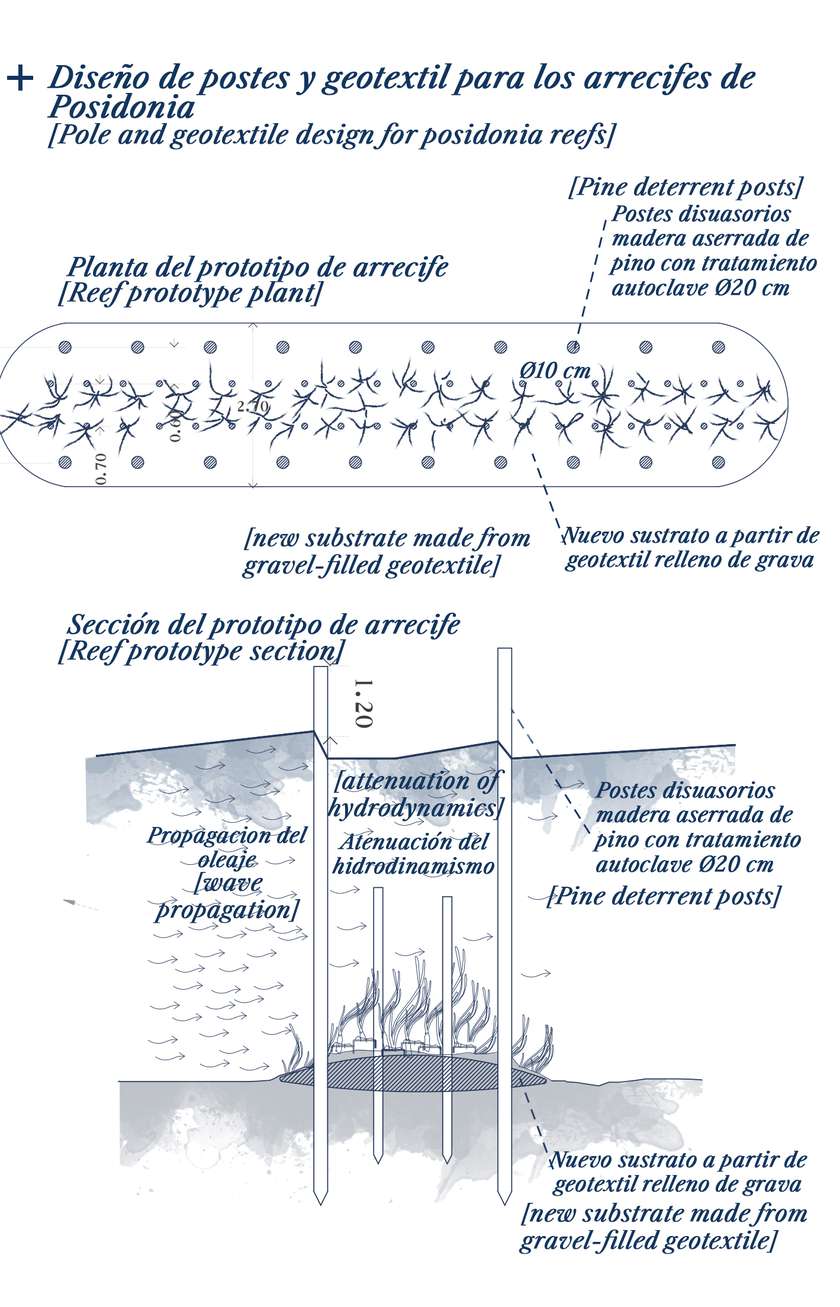
Posidonia reef. A Posidonia planting system is designed to improve the substrate necessary for plant proliferation and avoid the most common causes of deterioration.
To prevent the roots of the plant from being ripped off by the force of the waves and erosion, a new substrate in the form of a gravel-filled geotextile is installed. On this substrate is where the Posidonia fragments will be planted.
To this substrate will be added the installation of wooden piles to improve its fixation